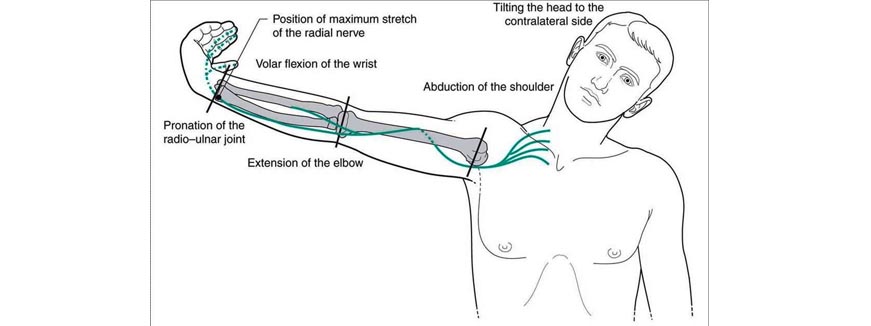We all know that your joints move and your muscles contract and stretch. But did you know that your nerve tissue also needs to move freely and unimpeded?
If your neural tissue is impeded then pain or restriction of your nerve movement is a common result. The adverse neural tension can result in nerve pain and limited motion.
Neural Tension Treatment
Your neurodynamics can be assessed by a neurodynamics trained physiotherapist in their clinic. They will use a series of neural tension tests which will identify:
- Which nerves have adverse neural tension?
- Where your nerve is impeded?
Neural Tension Treatment
The good news is that you can quite quickly regain your full neural mobility. With an accurate assessment and treatment to the structure causing the adverse neural tension, you will quickly be able to normalise your movement and provide nerve pain relief. Often this nerve pain relief is instantaneous!
What Conditions Commonly Develop Adverse Neural Tension?
Common examples of structures that can impede a nerve's movement include:
- Back Pain eg Bulging disc
- Sciatica
- Neck Pain
- Shoulder Pain
- Carpal Tunnel Syndrome
- Tennis Elbow
- Pinched Nerve
Neurodynamics vs Nerve Stretches
Interestingly, neural mobilisation as a treatment doesn't actually involve nerve stretching itself. Excessive nerve stretching can actually damage your nerves!
Rather than stretch your restricted nerve, your physiotherapist will assess you to discover any potential structures that are causing your nerves to be impeded. They will then treat that structure and retest your neurodynamics until your full neural mobility is restored. The upside is that not only will your nerve move freely, but your nerve pain will also disappear!
Research Support for the Neurodynamics Concept
The concept of neurodynamics or neuromobilisation is originally based on the research by physiotherapists, Michael Shacklock and David Butler. Over the past 20 years, further researchers such as Dr Michel Coppieters and Dr Alf Brief have added to the volume of scientific research supporting the hypothesis that your nerve tissue also requires full movement to remain for full pain-free function.
"Essentially the entire nervous system is a continuous structure and it moves and slides in the body as we move and the movement is related to critical physiological processes such as blood flow to neurones. This movement is quite dramatic and it is not hard to imagine that fluid such as blood in the nerve bed, a constricting scar, inflammation around the nerve or a nerve having to contend with arthritic changes or proximity to an unstable joint could have damaging effects, some of which could lead to pain."
"Neurodynamics is an innovative management tools involve conservative decompression of nerves, various neural mobilising techniques and patient education techniques. Neurodynamics offers a fresh understanding and management strategies for common syndromes such as plantar fasciitis, tennis elbow, nerve root disorders, carpal tunnel syndromes and spinal pain."
"Neuro mobilisation is a method of conservative treatment of disorders of neural tissue. The rationale for using neuro mobilisation in the treatment of musculoskeletal conditions is based on in vivo and in vitro studies which point to a high efficacy of neuro mobilization procedures. Appropriate use of neuro mobilization procedures depends on excellent knowledge of normal and pathological anatomy, differences between individual etiological factors, development of disease and symptom variability." Michael Shacklock
Shacklock M (1995) Neurodynamics. Physiotherapy 81: 9-16. 2.
Shacklock M (2005) Clinical Neurodynamics: a new system of musculoskeletal treatment, Elsevier, Oxford, UK.
Neurodynamics Training Courses
Neurodynamics
Related Treatment Options
Bed RestEarly Injury Treatment
Avoid the HARM Factors
What to do after a Muscle Strain or Ligament Sprain?
Acupuncture and Dry Needling
Sub-Acute Soft Tissue Injury Treatment
Core Exercises
Closed Kinetic Chain Exercises
Active Foot Posture Correction Exercises
Gait Analysis
Biomechanical Analysis
Balance Enhancement Exercises
Proprioception & Balance Exercises
Medications?
Orthotics
Real Time Ultrasound Physiotherapy
Soft Tissue Massage
Brace or Support
Electrotherapy & Local Modalities
Heat Packs
Joint Mobilisation Techniques
Kinesiology Tape
Neurodynamics
Physiotherapy Instrument Mobilisation (PIM)
Prehabilitation
Strength Exercises
Stretching Exercises
Supportive Taping & Strapping
TENS Machine
Video Analysis
Yoga


